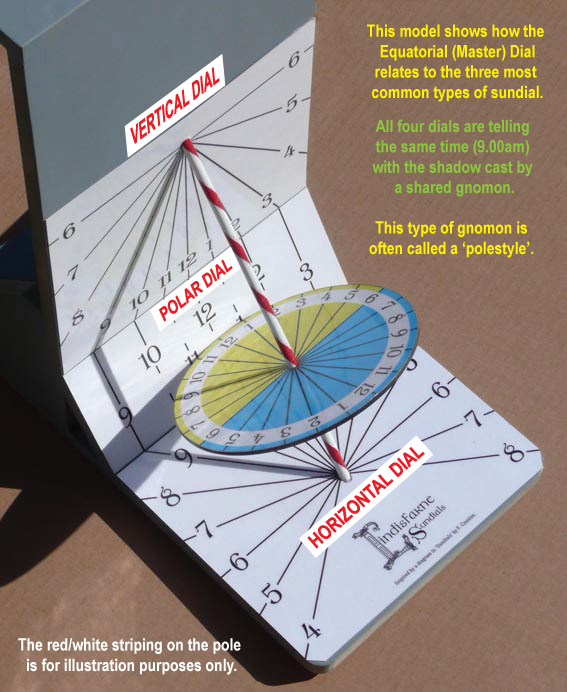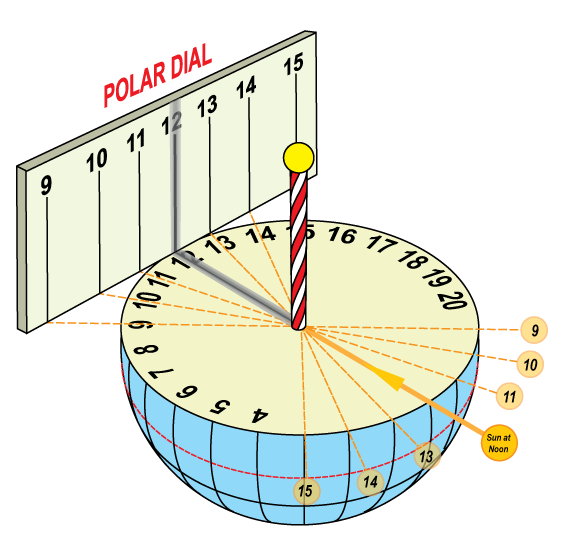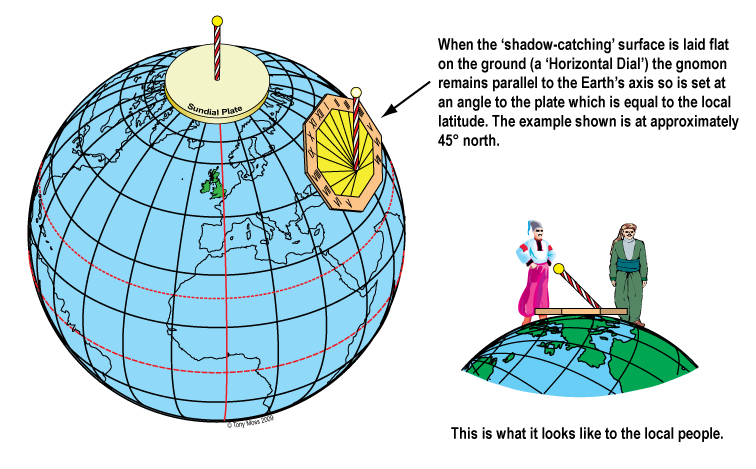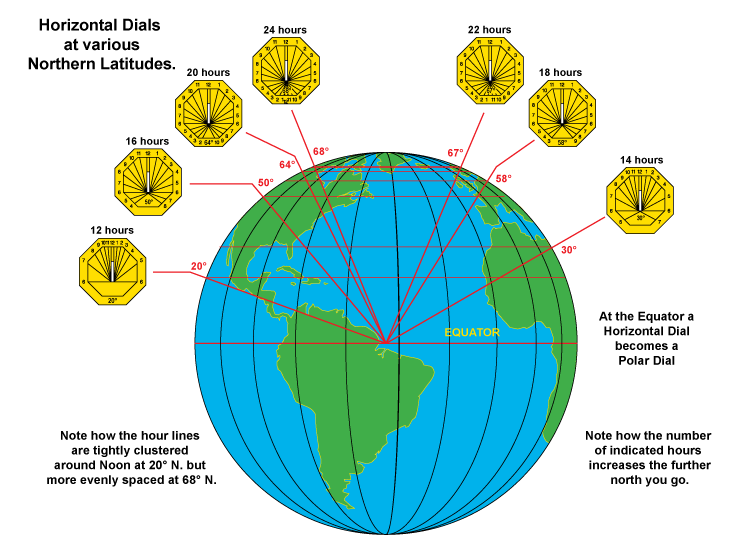- Home
- /
- All About Sundials
- /
- How Sundials Work
- /
- Part 2 - Different...
Part 2 - Different types of Dial.
The three most common types of sundial you might see are the Horizontal, Vertical and Polar. As you can see from the model below, these are all derived from the equatorial dial, with the dial lines extended onto another surface. When this happens the regular 15 degree spacing for the hours changes on the other surfaces.

Polar Dials
A polar dial is sloped at the latitude of the location and has a gnomon at 90 degrees to the dial face.


Horizontal Dials
A horizontal dial has the face flat and the gnomon angled at the latitude.

Horizontal dials at different latitudes have different angles for the hours, and also the angle between the gnomon and the flat face of the dial. This is why a horizontal dial only works properly at the latitude which it was made for.

Vertical Dials
A vertical sundial on a truly south-facing East/West wall has a central vertical noon line and a symmetrical arrangement of hour lines. The hours will begin at 6am and end at 6pm

Sundials on walls lying at an angle to truly East/West are said to 'decline'.
In most cases the noon line will still be vertical but the gnomon
will be rotated to so that it continues to align with the Earth's axis.

